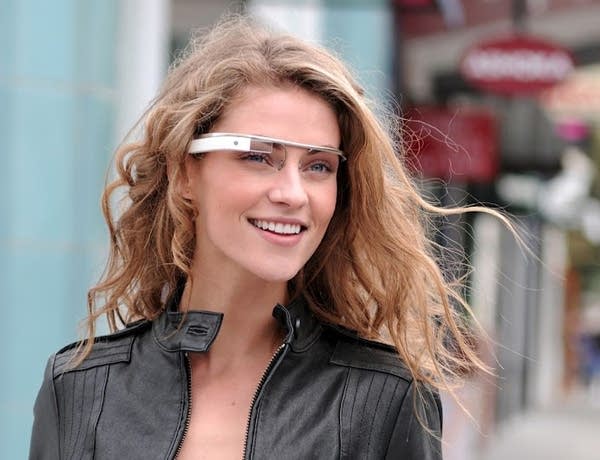Google creates a spectacle with project
Go Deeper.
Create an account or log in to save stories.
Like this?
Thanks for liking this story! We have added it to a list of your favorite stories.

By BARBARA ORTUTAY
AP Technology Writer
NEW YORK (AP) — If you think texting while walking is dangerous, just wait until everyone starts wearing Google's futuristic, Internet-connected glasses.
Directions to your destination appear literally before your eyes. You can talk to friends over video chat, take a photo or even buy a few things online as you walk around.
These glasses can do anything a smartphone or tablet computer does now — and then some.
Turn Up Your Support
MPR News helps you turn down the noise and build shared understanding. Turn up your support for this public resource and keep trusted journalism accessible to all.
Google gave a glimpse of "Project Glass'' in a video and blog post this week. Still in an early prototype stage, the glasses open up endless possibilities — as well as challenges to safety, privacy and fashion sensibility.
The prototypes have a sleek wrap-around look and appear nothing like clunky 3-D glasses. But if Google isn't careful, they could be dismissed as a kind of Bluetooth earpiece of the future, a fashion faux-pas where bulky looks outweigh marginal utility. In development for a couple of yeare, so you know where to drill?
"Not paint your house, because the people who looked at your house could see whatever color they wanted it in?'' pondered veteran technology analyst Rob Enderle.
Wearing the glasses could turn the Internet into a tool in the same way that our memory is a tool now, mused science fiction writer and computer scientist Vernor Vinge. His 2006 book, "Rainbow's End,'' set in the not-so-distant future, has people interacting with the world through their contact lenses, as if they had a smart phone embedded in their eyes.
"Things we used to think were magic, we now take for granted: the ability to get a map instantly, to find information quickly and easily, to choose any video from millions on YouTube rather than just a few TV channels,'' Google CEO Larry Page wrote in a letter on the company's website Thursday.
In Google's video, a man wearing the spectacles is shown getting subway information, arranging to meet a friend for coffee and navigating the inside of a bookstore, all with the help of the glasses. It ends with playing the ukulele for a woman and showing her the sunset through a video chat.
Google posted the video and short blog post about Project Glass on Wednesday, asking people to offer feedback through its Google Plus social network.
By Thursday, about 500 people did, voicing a mix of amazement and concern about the new technology. What if people used it in cars and got distracted? What about the effect on your vision of having a screen so close to your eye?
Some asked for prototypes, but Google isn't giving those out just yet. The company didn't say when regular people can expect to get their hands on a piece of Project Glass, but going by how quickly Google tends to come out with new products, it may not be long. Enderle estimates it could be about six months to a year before broader tests are coming, and a year or more for the first version of the product.
With such an immersive device as this, that sort of speed could be dangerous, he cautions.
"It's coming. Whether Google is going to do it or someone else is going to do it, it's going to happen,'' Enderle said. "The question is whether we'll be ready, and given history we probably won't be. As a race we tend to be somewhat suicidal with regard to how we implement this stuff.''
Dear reader,
Your voice matters. And we want to hear it.
Will you help shape the future of Minnesota Public Radio by taking our short Listener Survey?
It only takes a few minutes, and your input helps us serve you better—whether it’s news, culture, or the conversations that matter most to Minnesotans.





